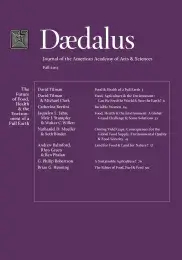Closing Yield Gaps: Consequences for the Global Food Supply, Environmental Quality & Food Security
The social, economic, and environmental costs of feeding a burgeoning and increasingly affluent human population will depend, in part, on how we increase crop production on under-yielding agricultural landscapes, and by how much. Such areas have a “yield gap” between the crop yields they achieve and the crop yields that could be achieved under more intensive management. Crop yield gaps have received increased attention in recent years due to concerns over land scarcity, stagnating crop yield trends in some important agricultural areas, and large projected increases in food demand. Recent analyses of global data sets and results from field trials have improved our understanding of where yield gaps exist and their potential contribution to increasing the food supply. Achieving yield gap closure is a complex task: while agronomic approaches to closing yield gaps are generally well-known, a variety of social, political, and economic factors allow them to persist. The degree to which closing yield gaps will lead to greater food security and environmental benefits remains unclear, and will be strongly influenced by the particular strategies adopted.
The grand challenge of feeding a growing global population will require a diversity of solutions if we are to simultaneously protect natural resources and enhance food security. One frequently cited strategy is to increase food production on existing agricultural lands: the continued “intensification” of agriculture.1 Increasing productivity has the potential to augment food supply while sparing natural ecosystems from conversion to agriculture.2 Much of the worlds’ croplands have experienced growth in crop yields (production per unit area), beginning, perhaps most dramatically, with the advent of green revolution technologies during the mid-twentieth century. However, not all regions have uniformly achieved gains; in many areas, a yield gap persists between the crop yields that are achieved and the crop yields that are achievable using the right cultivars, inputs, and other management practices.
Because yield gaps are the end result of myriad interacting biological, physical, and economic forces . . .
